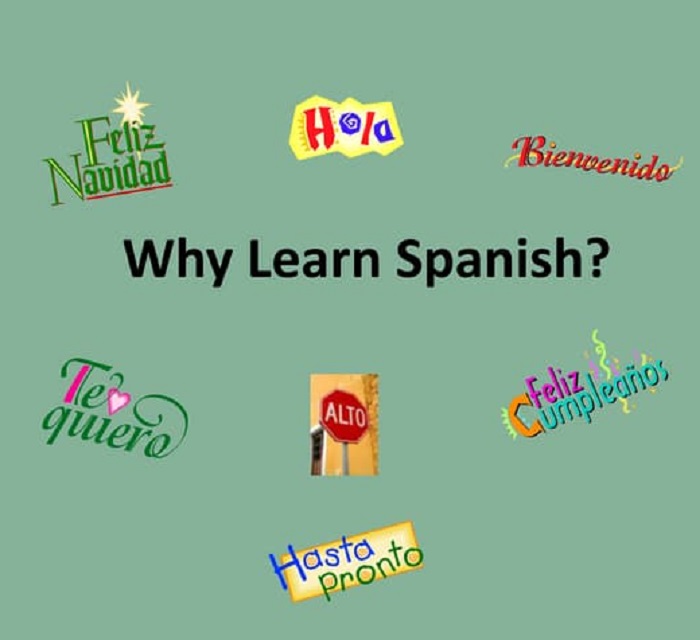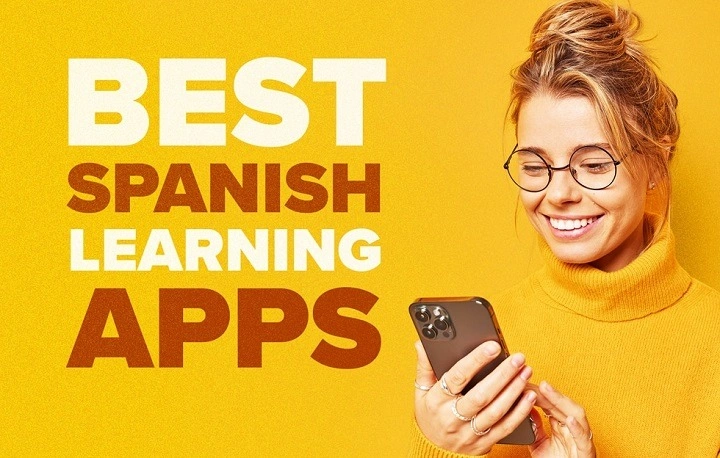Learning Spanish is an exciting journey, and with the advent of technology, it’s easier than ever to master this beautiful language. Whether you’re a beginner or looking to polish your skills, the right app can make a world of difference. In this comprehensive guide, we will delve into the best apps to learn Spanish, covering everything from features to user experiences. Let’s embark on this linguistic adventure together!
Why Learn Spanish?

Cultural Enrichment
- Explore Diverse Cultures: Spanish is spoken in over 20 countries, each with its own unique culture and traditions.
- Enjoy Spanish Media: Access a plethora of Spanish-language films, music, and literature.
Career Opportunities
- Boost Your Resume: Being bilingual opens doors to job opportunities in various fields such as international business, healthcare, and education.
- Global Market Advantage: Spanish is the second most spoken language in the world, giving you an edge in global markets.
Cognitive Benefits
- Enhanced Memory: Learning a new language improves memory and cognitive functions.
- Better Multitasking: Bilingual individuals often excel at multitasking and problem-solving.
Factors to Consider When Choosing a Language Learning App
Learning Style
- Visual Learners: Apps with videos and images.
- Auditory Learners: Apps that emphasize listening and speaking exercises.
- Kinesthetic Learners: Interactive and hands-on activities.
Skill Level
- Beginner: Basic vocabulary and grammar.
- Intermediate: Conversation practice and advanced grammar.
- Advanced: Fluency and cultural nuances.
Features
- Speech Recognition: Ensures correct pronunciation.
- Gamification: Makes learning fun and engaging.
- Offline Access: Learn anywhere, anytime.
- Cultural Insights: Understand the cultural context of the language.
Top Apps to Learn Spanish
1. Duolingo
Overview
Duolingo is one of the most popular language learning apps, and for good reason. Its gamified approach makes learning Spanish fun and addictive.
Features
- Gamified Lessons: Earn points and unlock new levels.
- Adaptive Learning: Lessons adjust to your learning speed.
- Community Support: Join forums and connect with other learners.
- Regular Updates: New content added frequently.
Pros
- Free Version Available: Access basic lessons without a subscription.
- User-Friendly Interface: Easy to navigate and use.
- Variety of Exercises: Covers reading, writing, speaking, and listening.
Cons
- Limited Depth: Not as comprehensive for advanced learners.
- Ads in Free Version: Can be distracting.
2. Rosetta Stone
Overview
Rosetta Stone is renowned for its immersive learning method, which mimics the way you learned your first language.
Features
- Immersive Learning: No translations, learn through context.
- Speech Recognition: TruAccent technology helps with pronunciation.
- Live Tutoring: Access to live sessions with native speakers.
- Offline Mode: Download lessons for offline use.
Pros
- Proven Methodology: Trusted by millions of users worldwide.
- Comprehensive Curriculum: Suitable for all skill levels.
- High-Quality Content: Engaging and well-structured lessons.
Cons
- Cost: More expensive than some other apps.
- Repetitive Exercises: Can become monotonous over time.
3. Babbel
Overview
Babbel offers courses crafted by linguistic experts, focusing on real-life conversation skills.
Features
- Short, Effective Lessons: 10-15 minute sessions.
- Grammar and Vocabulary: In-depth explanations and practice.
- Speech Recognition: Practice speaking with instant feedback.
- Review Manager: Personalized review sessions.
Pros
- Structured Learning: Lessons build on previous knowledge.
- Real-Life Conversations: Focus on practical language use.
- Affordable Subscription: Various pricing options.
Cons
- Limited Free Content: Most features require a subscription.
- Less Gamified: Might not be as engaging for some users.
4. Memrise
Overview
Memrise uses spaced repetition and multimedia content to help you learn and retain Spanish effectively.
Features
- Spaced Repetition: Optimizes review sessions for better retention.
- Multimedia Content: Videos with native speakers.
- Community Courses: User-generated content for varied learning.
- Daily Goals: Set and track your progress.
Pros
- Engaging Content: Fun and interactive lessons.
- Flexible Learning: Learn at your own pace.
- Variety of Courses: Covers different topics and difficulty levels.
Cons
- User-Generated Content: Quality can vary.
- Requires Internet: Most features need an internet connection.
5. Pimsleur
Overview
Pimsleur is known for its audio-focused method, ideal for those who prefer learning on the go.
Features
- Audio Lessons: 30-minute sessions you can do anywhere.
- Core Vocabulary: Focus on essential words and phrases.
- Graduated Interval Recall: Helps retain what you’ve learned.
- Hands-Free Learning: Ideal for multitasking.
Pros
- Convenient: Learn while commuting or doing other activities.
- Effective Method: Proven to improve conversational skills.
- Native Speakers: Learn authentic pronunciation.
Cons
- Audio-Centric: Limited visual content.
- Subscription Cost: Can be pricey compared to other apps.
6. Busuu

Overview
Busuu offers a personalized learning experience with a strong community aspect.
Features
- Personalized Study Plans: Tailored to your learning goals.
- Native Speaker Interaction: Practice with native speakers.
- Grammar Exercises: Detailed explanations and practice.
- Offline Mode: Download lessons for offline use.
Pros
- Community Feedback: Get corrections and feedback from native speakers.
- Comprehensive Courses: Covers all aspects of the language.
- User-Friendly: Intuitive and easy to use.
Cons
- Limited Free Version: Most features require a subscription.
- Variable Quality: Some community corrections may lack consistency.
7. Lingodeer
Overview
Lingodeer offers a well-rounded learning experience with a focus on structured, curriculum-based lessons.
Features
- Structured Courses: Lessons designed by language teachers.
- Interactive Exercises: Engage with the material in various ways.
- Grammar Notes: Clear explanations of grammar points.
- Offline Learning: Access content without internet.
Pros
- High-Quality Content: Lessons are well-crafted and thorough.
- Visual and Auditory Learning: Appeals to different learning styles.
- Affordable: Reasonably priced subscriptions.
Cons
- Limited Languages: Fewer language options compared to other apps.
- Less Community Interaction: Limited social features.
8. Clozemaster
Overview
Clozemaster uses context-based learning to help you master Spanish vocabulary and grammar.
Features
- Contextual Learning: Learn words in the context of sentences.
- Gamified Experience: Earn points and compete on leaderboards.
- Variety of Modes: Multiple ways to practice and review.
- Offline Access: Practice without an internet connection.
Pros
- Effective Vocabulary Building: Learn in real-life contexts.
- Engaging: Gamified elements keep you motivated.
- Free Version Available: Access basic features without a subscription.
Cons
- Focused on Vocabulary: Less emphasis on speaking and listening.
- Interface: Can be overwhelming for some users.
Tips for Using Language Learning Apps Effectively
Consistency is Key
- Daily Practice: Dedicate a few minutes each day to learning.
- Set Goals: Create achievable goals and stick to them.
Engage with the Community
- Join Forums: Participate in discussions and seek help.
- Practice with Native Speakers: Use features that allow interaction with native speakers.
Use Multiple Resources
- Supplement with Books and Movies: Enhance your learning with additional materials.
- Attend Language Classes: Combine app learning with formal education.
Track Your Progress
- Review Regularly: Use review features to reinforce what you’ve learned.
- Celebrate Milestones: Recognize and celebrate your achievements.
Conclusion
Learning Spanish can open up a world of opportunities and enrich your life in numerous ways. With the right app, you can make this journey enjoyable and effective. Whether you prefer a gamified approach like Duolingo, the immersive experience of Rosetta Stone, or the structured lessons of Babbel, there’s an app out there for everyone. Experiment with a few to find the one that suits your learning style and goals best. ¡Buena suerte! (Good luck!)


